Charting the Map for your Beginner Artist’s Journey
If you think about the basic requirements on the path leading toward how to be an artist, the list is long and meandering. Everyone has an opinion about what should come first on that list. You are the best resource for knowing what will and won’t work to get you into your own art practice. Here’s to Charting the Map for your Beginner Artist’s Journey!

Is there a Beginner Artist Map?
The maze every creative person navigates to acquire confidence and competence in their chosen field can be overwhelming.
The first time I said out loud to an established artist: “I want to explore a return to painting and eventually making art my livelihood. Where should I start?” She shook her head, and said: “You’re going to work harder than anyone you know.”
That statement would be repeated by other artists advising me, over and over again. It’s true; the work is hard and there are many hats to wear as a full-time artist. But other artists farther up the path can be *very* generous with their tips and encouragement. They are part of your map.

Buckle-Down
How can a beginning artist reduce the sense of overwhelm in the pursuit of a creative life?
Slice the cake of tasks we need to learn into smaller chunks and sequester them from the rest of the heap so we can tackle them one bite at a time.
Using the shotgun approach and trying to tackle everything at once is prone to burnout.
List your To-Do’s, pick one section to work on, and buckle down for a focused period of time.
This is not a complete list, but below are some of the minutia focal points and repeated mind scripts I’ve used while building a creative life.
Familiarity with Supplies
New art supplies have loads of potential, both as they were meant to be used, and as artists hack them for other applications in the studio.
Even serial art supply hoarders have favorite tools they return to over and over again. Is it the frequency of use and familiarity that makes a paintbrush your Go-To, or does that tool work magic?
Use your materials and tools a lot to squeeze your preferences out of them, and put your favorites out where you can grab them and Make Something on the fly.
Unfamiliar art supplies in your hand are absent of muscle memory. It’s like grabbing another artist’s palette each time you go to work on a large painting. If the quality of the paint and the choice of colors and how they blend are unfamiliar, your creative flow is curbed while you intellectually test your options.
Artists have to dive deep and get into the flow state to swim past the self-critic, but art supply analysis keeps you from doing that.
Know your tools. Use them a lot. Doodle with them. PLAY with your supplies before you tackle a masterwork.
Simplify your selection down to the instruments you know well.

The Brain During Flow State
This too has huge consequences for creativity. For example, during flow, the dorsolateral prefrontal cortex — the part of the brain charged with self-monitoring and impulse control — goes quiet. The DLPFC is our inner critic, that voice of doubt and disparagement. As a result, with this area deactivated, we’re far less critical and far more courageous, both augmenting our ability to imagine new possibilities and share those possibilities with the world.
Steven Kotler
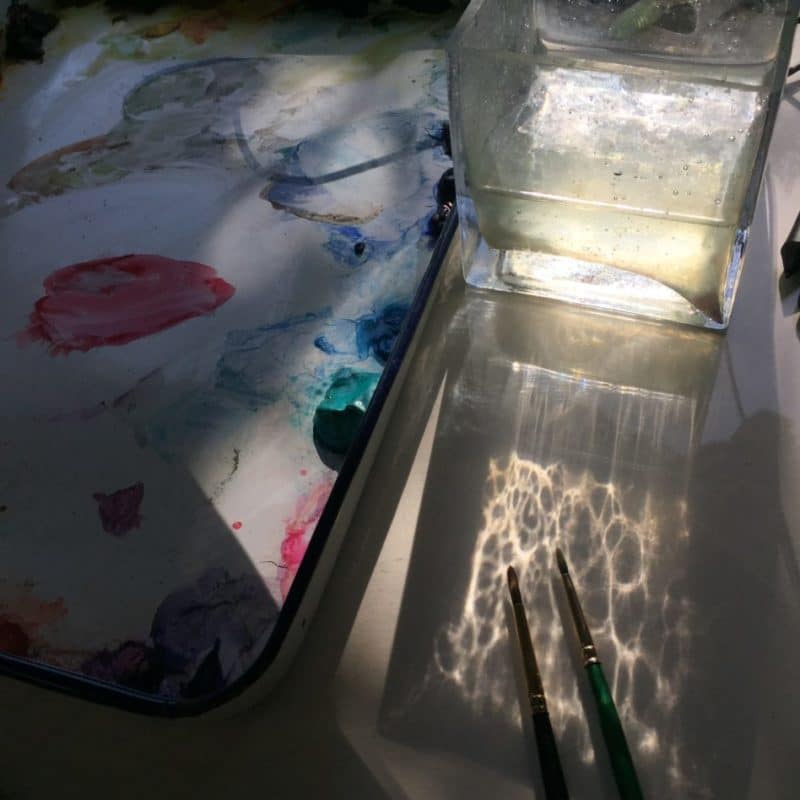
Mastery of Techniques
I built a series of tutorial videos on my youtube channel to encourage a painterly printmaking method called dark-field monotype.
Some folks love the process and dive deep into making six or seven monotype prints at a time. That deep dive can lead to a flow state. It also prohibits fussiness and self-doubt, as described by Steve Kotler above.
I also get emails from artists who made *one* monotype print, and found they were sorely disappointed with the outcome. When was the last time you felt masterful at something you tried once? I’ll make us tea while we think about it.
Okay, here’s a cup of herbal mint, with honey. Did you become proficient during your first drawing session? Cooking? Braiding hair? Raising kids? Me neither.
Familiarization with Technique, across all art forms, requires concentration, repetition, conviction, analysis, and study.
The surest way to sow seeds of discouragement in your command of technique is to expect brilliance in your first season. Layered underneath the Beginner pain weed path is the fertilizer called Infrequency of Practice.
It’s so much harder to learn anything with intermittent, occasional application. Pick one – a medium and a subject – and Work It.
You can play with other art supplies and other subjects on the weekends, but during the week, pretend you’re punching the clock in the tower of your longed-for Artistic Capability. Reel in your attention for everything artsy, and focus; get intimately familiar with that One Thing.
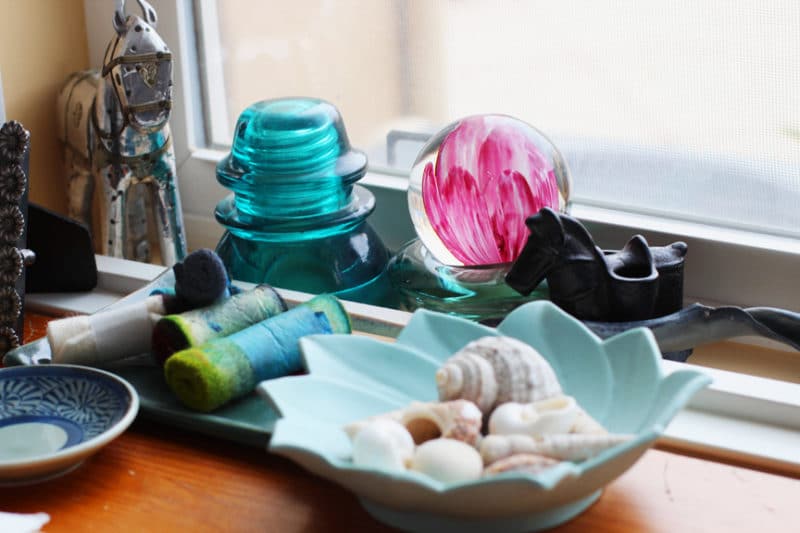
Learning to See
Are you a noticer? When you walk the neighborhood with your dog or enter a friend’s house for the first time, do you pay attention to your surroundings?
My husband advocates the practice of situational awareness, but I’m referring to something even deeper. Do you look at the color of shadows, the shape of treelines, or the distorted reflections of a street scene in a car’s windshield?
The ability to hone in on subtlety in color, value, shape, and composition is one of the most challenging aspects of being an artist, and I think noticing-practice has to simmer for a long time in order to improve.
How often do you study the things around you with an artist’s discerning eye? How long did it take you to grow from drawing the human eye like a flattened football to the complex, curved, spherical, shiny, lashed, and hooded wonder that it is?
Be aware of your gift as a noticer, and actively scrutinize the things that catch your attention. Keep a sketch pad or a notebook around for artistic surveillance, because science says that writing a thing makes it ‘stick’ in our brains.
You’ll use your powers of examination in drawing and painting over and over again, so flex and condition that muscle in the gym of observation whenever you can.


Developing Your Creativity
Creativity is not the same as technique or skill. Creativity as it’s defined is the ability to create.
Notice that it’s an active word. Creativity is an engaged problem-solving skill, a dogged decision-making process, and a continual form of expression, etc.
Creativity doesn’t sit still. It’s a moving, thriving, ever-changing state of being.
Creativity is also cultivated from your absorbed information. Every art demo we’ve watched, every instructional book we’ve studied, and each painting we felt inspired by is knowledge in a foreign tongue that still needs to be translated into familiarity through applied practice.
It’s not valuable until we leap into action to attempt that new acquisition, so we can wrangle it towards informing our own expression and art-making.
If all the inspirational influence, and technique you’re studying is never used in your own work, it’s not helping you develop your creativity.
Without a spigot to pour from, creative intake becomes a snow-mound pushed to one side by a plow of incoming new information, till it blocks, and then freezes your front door shut.
Use the torch of inspiration to unfreeze the door, at the moment you feel it. Gush. Make your art often to keep growing and developing your personal creativity.
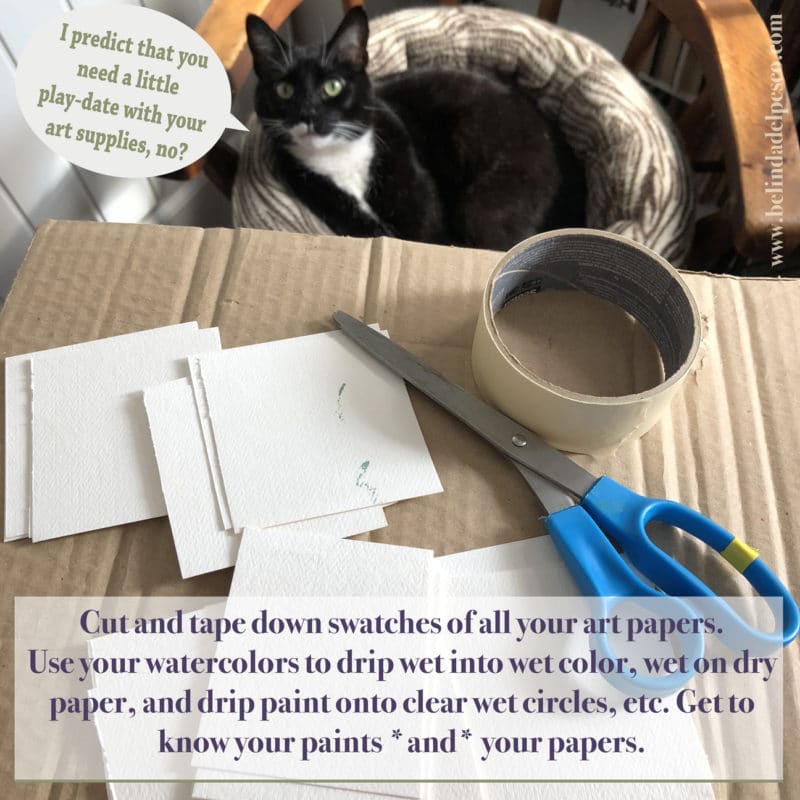
Scheduling and Logistics
Finding time to make art can be the biggest roadblock for an artist, especially if you work, or you’re raising a family of little some-day-artists, or both.
At the end of the day, your Creative gas tank might feel empty, but don’t confuse that with your Life gas tank. Sports practice, carpooling, work deadlines, and dinner prep will tap every molecule of stamina from your reserves.
But that’s not the same expenditure as making art. Imagine the fuel for your creative endeavors stored in a different silo of reserves.
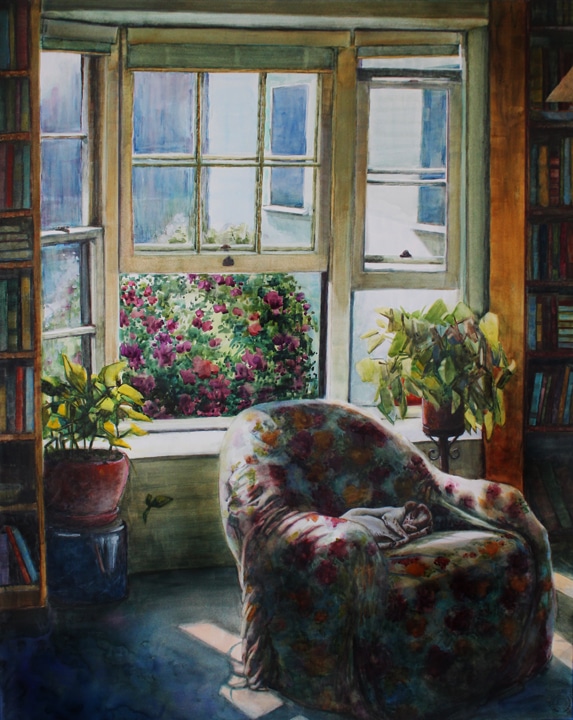
The Dessert Room
When our kids were little we used to say “Keep your dessert door closed!” while eating dinner. It was a play on the phrase ‘room for dessert’, as though there’s a room for dinner and a separate room for dessert.
The dessert room must be protected from dinner, lest it get too crowded in there.
Imagine that you have a Creative Room. Your art-making reserves are untouched and still full after a day of busy life stuff. Take a deep breath, open that cupboard, and pull out a sketchpad.
Spend just 30 minutes doodling at the end of your day. It’s a reward you’ve earned. Save room for dessert.

Chocolate Stash at the Back of the Pantry
Making 30 minutes of art shouldn’t feel like work, so you won’t experience the same level of fatigue as when you empty the dishwasher or search for Sally’s lost snow boot.
Use some of the strategies in my free course Six Tips to Paint More (watch the preview here). Compartmentalize art-making into neat shims you can fit between your Life Routines.
Making art incrementally as described in this post, has been a game-changer for me.
One of the crucial details for you to move forward on making more art is setting aside other habits that fill those time brackets.
Do you clean the house during downtime? How much television do you watch? What’s your average weekly total for surfing social media and reading/writing email?
Can I suggest that you leave some of that for another day to make room for art? I’m not recommending that you abandon a tidy house and life responsibilities, but perhaps you can leave one afternoon or morning or evening open for just one hour – one day a week – to make art, can’t you?
Creating (output) sustains you more than consuming (intake). And the laundry will wait for you, I promise.
Mine is calling with the dryer’s end-of-cycle beep as I type this, and I’m showing it my best Stop-It Hand, palm up. Just till I finish writing this post.

Artist Huddle
What suggestions do you have for artists just starting out? Beyond the practical things, like which paper and what sort of brush to use.
What are the mindsets that have worked well to get you into the studio, practicing your craft consistently?
How do you squash your doubts so you can paint more often? Leave your nuggets of encouragement in the comments.
Thanks for stopping by today, and I’ll see you in the next post –
Belinda
P.S. You can get every new post via email by subscribing here.

Art Quote
Artists are consuming the surface quality of the images [other people’s paintings] so, so quickly, that we’re not taking our time to just say – okay – why does this move me? You have to dig deeper. You can’t just say I just find it exciting, I just find it really cool, or I just love the way the paint is applied. All those things are important, but they are surface qualities, and I think we have to take our time.
~Nicolas Uribe
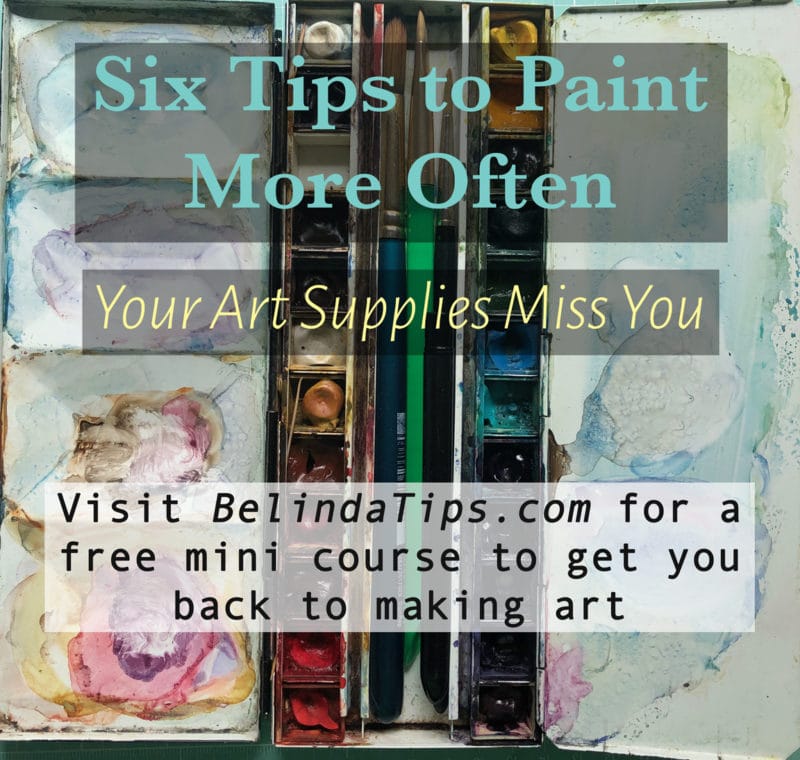

Thanks for the encouragement, knowing other artists have this sense of not being able to move forward is a revelation! I felt it was only me. I find your comments very helpful…
Hi Jude, I’m glad to share all the parts of being an artist, with hope that it resonates and creates a sense of community over the miles. You are not alone in any of it; the joys, the urge to create, the self doubt, the let-down when something so exciting to start doesn’t meet your expectations due to rusty skill sets… We have to remind ourselves that it’s just art, and we must push through and try again.
Thank you so much for this post! I am feeling overwhelmed by how much I want to learn;I have bought books but dabble in all of them instead of focusing on one thing. I will make a list as you suggest and try to stick to it! I love your in-progress photos, too. It is fascinating to see how your paintings develop.
Hi SUsan, I’m glad the post made sense to you. I wrestle with the urgency to learn *everything* in the climb towards proficiency. Time is ticking, failed paintings cut swatches from progress. and there’s so much to read! Dialing back to go deeper quells the melee. I hope it works well for you. See you soon 🙂
Your thoughts and insights on this topic are simple yet profound – lots of food for thought ;). I also shared this post with a Facebook group for polymer clay artists. I’m sure it will speak to others as well. Thank you!
Hi Nancy, Thank you for such encouraging feedback. I’m glad the post made sense to you. If I could turn time back, and re-direct myself, these are the things I wish I’d known. Thanks for the share. Happy making.
Keep up the beautiful work.
Belinda, wonderful stuff. It almost makes me want to paint!
Hey there, you! Thanks for the kind note. And you *do* paint – with words! XOXO